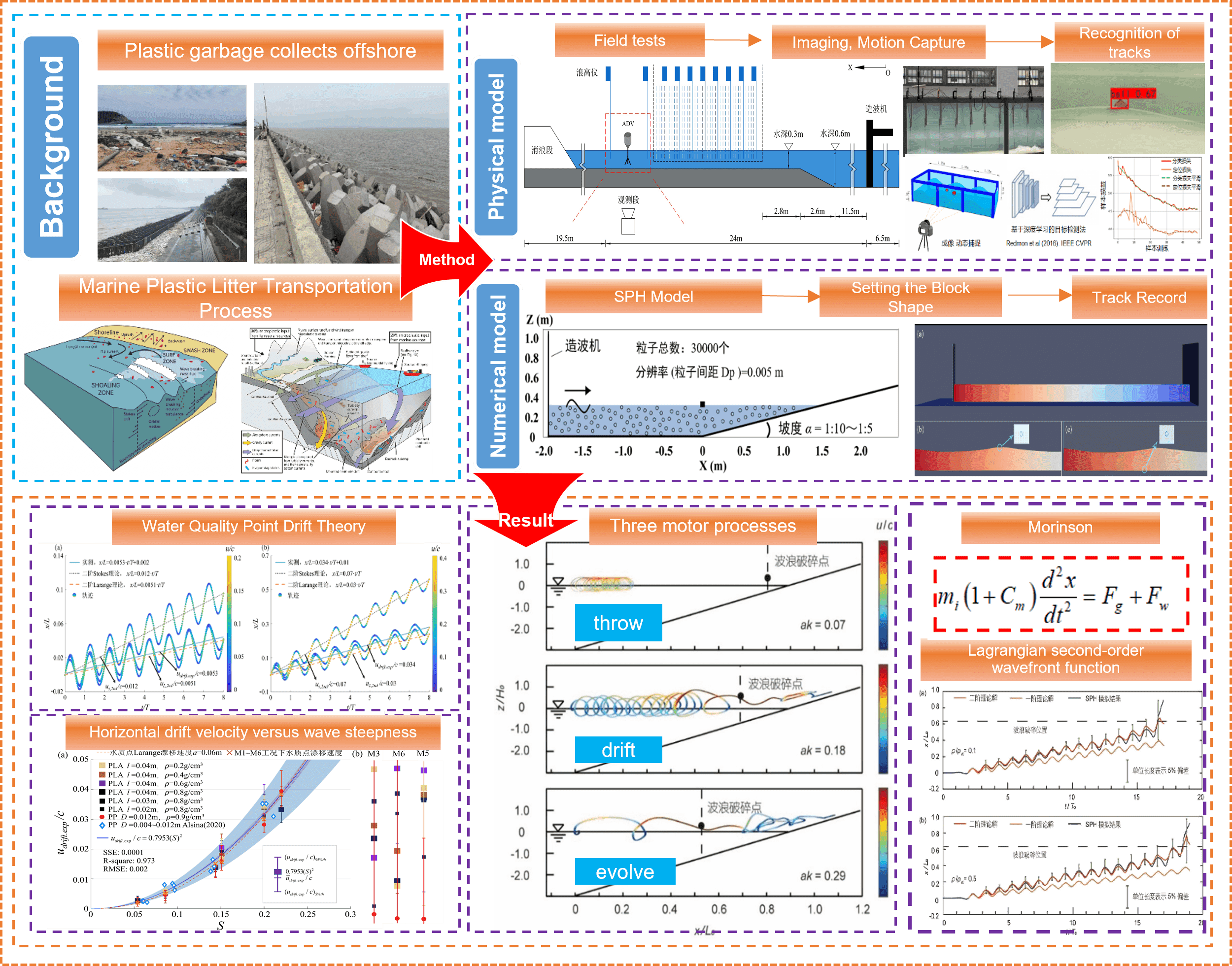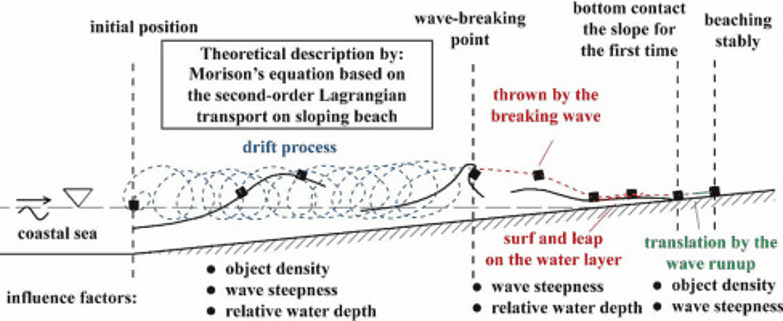Transport and transformation of offshore and nearshore materials (sediment particles, plastic debris, etc.)
About 742 wordsAbout 2 min
2025-03-13
Introduction
Through the combination of physical modeling experiments and numerical simulation means, we study the movement law of near-shore materials under the action of near-shore waves, and their correlation to wave conditions and their own properties, and understand their transportation mechanism and near-shore process; based on the theoretical analysis and data-driven fusion to reach a rapid prediction of marine garbage and pollution traceability.

The stranding process of nearshore floating marine debris
It is investigated by physical model experiment combined with Smooth Particle Hydrodynamics (SPH) method to study the migration and stranding behavior of nearshore floating debris under the action of regular waves. It is found that the motion process of floating debris in the nearshore can be categorized into the drifting process in front of the breaking wave band, the throwing process accompanied by wave breaking, the climbing and falling back process in the surface layer of the water tongue after coming ashore, and the advection process on the slope after touching the bottom. The study shows that when the wave steepness is small during the normal wave period, floating debris with lower material density will drift to the breaking zone and be stranded, while floating debris with higher material density will be stranded in the water before the breaking zone and will not be able to move forward. When the wave steepness is high, it is also accompanied by the phenomenon of rising water, which causes the stranded floating garbage to float again and then be pushed back toward the shore by the action of the waves. At the same time, floating debris with greater material density will also be transported ashore, eventually forming a more extensive stranded zone of shoreline debris. The macroscopic variability of wave height and wave period will result in the long-term distribution of floating debris along the coast of the corresponding sea area.

Exploring the motion mechanism of floating marine debris based on AI recognition
By designing different groups of wave conditions and using wave channel experiments to investigate the interception, capture and passage of floating debris in different combinations of water depths and wave conditions; combining AI workers such as YOLO, roboflow and other AI workers to recognize the horizontal spread of floating debris and the trajectory of floating debris, the error values of the AI images and the detection accuracy values all tend to be stable; the average prediction accuracy of the detection results reaches 84.9%. The average prediction accuracy of the detection results reaches 84.9%.


Distribution and Migration Mechanism of Floating Trash on Chess Bay Beach, Hainan
A comprehensive and systematic study of the distribution of garbage on Chess Bay Beach was conducted to accurately count the number and percentage of different types of garbage at different locations on the beach, including the high tide line, low tide line, middle part of the beach, and both sides of the bay, and to analyze the intrinsic relationship between the distribution of garbage and the intensity of tides, topography, and intensity of human activities along the coastline. At the same time, by dropping specific tagged floating objects, we conducted on-site tracking of floating garbage in Chess Bay under the combined effects of wind, waves, tides, and currents, and explored the mechanism of floating garbage drift under the complex dynamic environment of the ocean.

